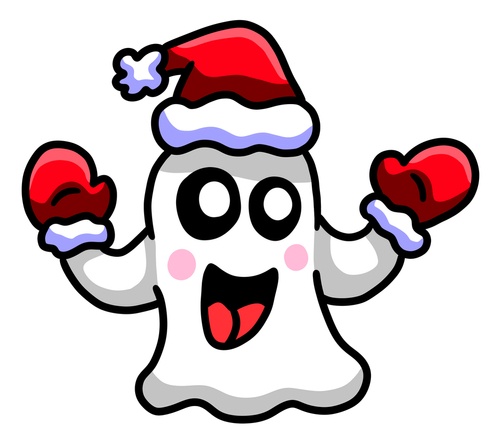
Did you know Christmas and Halloween share ghost stories in common? Credit goes to their pagan roots.
These days, everybody is familiar with the classic Christmas ghost story, A Christmas Carol by Charles Dickens, which was published in 1843. But telling ghost stories at Christmas dates back even farther than Scrooge being haunted by Marley’s ghost. Back before Christmas was even born.
Disclaimer: Please note, we are part of the Amazon Affiliate program and Amazon is one of our affiliates. If you purchase anything after clicking the link(s) or image(s) above, we may earn a small commission. (For which the Skeleton Crew says, “Thank you!” That helps cover our website maintenance and hosting fees!)
As Smithsonian Magazine so poetically put it: “When the night grows long and the year is growing to a close, it’s only natural that people feel an instinct to gather together. At the edge of the year, it also makes sense to think about people and places that are no longer with us.”
What better way to do that with a ghost story? Preferably gathered around a warm, safe fire and possibly raising spirits of another kind –the type you imbibe from a glass filled with good cheer.
Yule: Christmas Ghost Story Origins
Yule, or Yuletide, is the pagan Winter Solstice celebration and festival that celebrates the darkest day of the year.
In modern times, Yule spans 12 days, but in some ancient pagan cultures, like Germanic, it could last for two months.
Other than eating, drinking, and likely sleeping and fornicating, what else could people do thousands of years ago pre-TV, movies, YouTube, and cellphones?
Make music and tell stories.
Especially ones, as Smithsonian put it, about: “…darker, older, more fundamental things: winter, death, rebirth….”
Winter Solstice: The Second Most Haunted Time of the Year
Another reason Christmas is a good time for ghost stories, and something else it shares in common with Halloween, is that they’re both the most haunted times of the year.
Well, Samhain is the most haunted, but the Winter Solstice is a close second.
As described in The Spirits of Ghosts and Yule by Montague Whitsel:
This event – which marks the moment in the spiral of earthen time when the Old Sun dies (at dusk on the 21st of December) and when the Sun of the New Year is born (at dawn on the 22nd of December) – frames the longest night of the year. The birth of New Sun is thought to revivify the aura of the Earth in mystical ways, giving a new ‘lease on life’ to spirits and souls of the dead.
As such, Yule is probably the second most haunted time of the Celtic year, Samhain being the first.
Christmas Hauntings Differ from Halloween’s
As Whitsel also goes on to elaborate, the hauntings that happen during Halloween aren’t the same as the ghosts that come to visit during the Christmas season/Winter Solstice. If anything, they might be more like those of Dia de los Muertos.
Samhain is more the dead in general coming back. Yule hauntings are much more Dickens-esque. Like Marley and the Ghosts of Christmas Past, Present, and Future, Winter Solstice hauntings have a purpose and some link to the season’s death/rebirth theme.
But regardless of the reason or season, if a ghost comes to visit, it makes for a good story. It just sort of works out nicely that Christmastime ghost stories are a little less scary and a bit more heartwarming.
Courtney Mroch is a globe-trotting restless spirit who’s both possessed by wanderlust and the spirit of adventure, and obsessed with true crime, horror, the paranormal, and weird days. Perhaps it has something to do with her genes? She is related to occult royalty, after all. Marie Laveau, the famous Voodoo practitioner of New Orleans, is one of her ancestors. (Yes, really! As explained here.) That could also explain her infatuation with skeletons.
Speaking of mystical, to learn how Courtney channeled her battle with cancer to conjure up this site, check out HJ’s Origin Story.

I like both Christmastime haunted stories with their eeriness and the more terrifying Halloween haunted stories.
Oh yes! Because this is the horror writer/lover in you for sure.